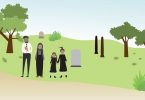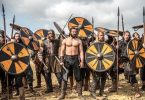| At one time in North America, most people shopped downtown on Main Street. |
| Most businesses were at the center of town. |
| When people started using automobiles, however, they moved away from downtown. |
| In time, most people lived in the suburbs. |
| Eventually, stores and small shopping plazas were built in suburban areas. |
| Still, most of the big stores were downtown. |
| But as more and more cars were on the roads, driving and parking downtown became a problem. |
| There wasn’t room for a lot of cars to park downtown. |
| People also didn’t want to fight downtown traffic just to go shopping. |
| So in the 1950s and 1960s, |
| there was the beginning of large suburban shopping malls and plazas. |
| Plazas were a row of stores attached to one another. |
| Malls were usually a double row of stores with a roof connecting both rows. |
| This means that shoppers did all their shopping inside. |
| Large department stores and grocery stores were usually part of the mall, but there were many smaller stores as well. |
| When you came to the mall and went inside, many people would get a shopping cart. |
| You can walk along the aisles, putting your purchases in the cart. |
| When you’re finished shopping, you can push your shopping buggy out to the car. |
| Many malls also have buggies or strollers for pushing small children along. |
| There can be a lot of walking in a trip to the mall. |
| In fact, some people go to the mall just to exercise. |
| A half dozen laps around the mall every morning amount to a pretty good workout. |
| However, there are always places to sit down when you get tired. |
| Most malls have a food court. |
| This is an open area with a lot of tables and chairs. |
| Usually there are a dozen or more small restaurants circled around the food court. |
| The department stores often have full-size restaurants. |
| Malls have large parking lots. Unlike downtown, you don’t pay to park at the mall. |
| On a busy day, finding a space close to the store can be a challenge. |
| Many people go to the malls when the weather is bad. |
| During wintry weather, the malls are busy. |
| Likewise, in really hot summer weather, people go to the malls to get cool. |
| The climate there is always the same. |
| People don’t go to malls just to shop. They also go to meet people. |
| Usually, you bump into friends and neighbors there. |
| Old people, as well as teenagers, go there to see friends. |
| Usually the malls sponsor special events. |
| With lots to see and do, malls are a popular place to “hang out”. |
More English listening lessons for intermediate level:
Lesson 81: Alexander Graham Bell





